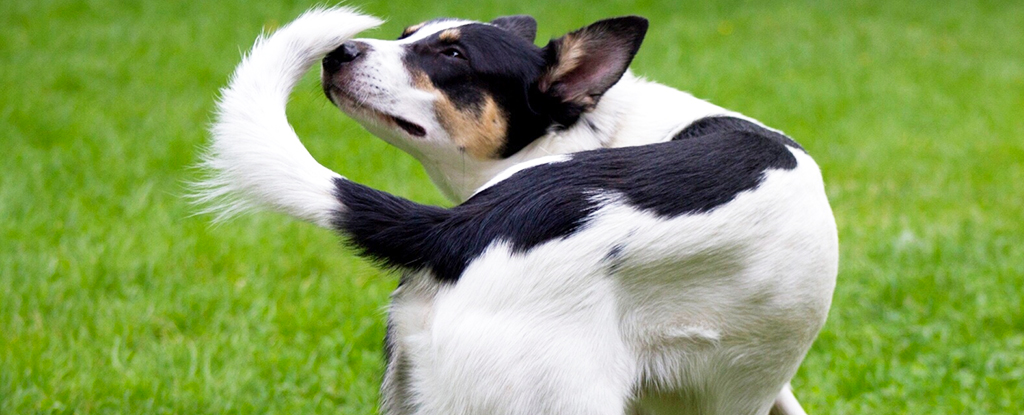Cocks come in many shapes, strengths and sizes. The long, thick tail of a kangaroo acts as a third leg. The rabbit’s fluffy bottom is used to communicate with other rabbits. The hippo’s rope-like tail snaps her poop far and wide.
Many carnivores use their tails to make themselves more agile when hunting. The question of whether this also includes dogs has never been answered satisfactorily.
By combining experimental data, mathematical models and simulations, an international team of researchers has found that the dog’s tail plays only a very minor role in stabilization. The research appears on the preprint server bioRxivand has yet to be evaluated by experts.
Most members of the Canidae family are minority mammalian carnivores: they do not climb. All movement is restricted to the ground. But climbing animals use their tails extensively when performing their acrobatics: for balancing, counterweight, and in some cases, grasping.
But tails can also be useful on the ground. Cheetahs use their tails for Jump stabilization and rotation. Dogs tend to have smaller tails in relation to their bodies than the tails of climbing mammals, but scientists have suggested dogs might do this Use their tails in the same way. Also, the inertia of a tail can aid in agile locomotion—even in squirrels, whose tails are also relatively small in mass.
“It is not known whether larger carnivores such as canids can still use their tails for this purpose, or whether other appendages such as head movements must be used,” write a team led by bioroboticist Tom Rottier, then at the Max Planck Institute for Intelligent Systems in Germany, now at the University of Manchester in the UK.
“Canidae have been shown to exhibit various elevations and valleys of the tail at different speeds of movement, with many dogs walking with an erect tail while galloping with a spine-aligned tail. However, these movements are very complex and require long periods of dedicated practice to be able to perform them, making it an unlikely strategy for other animals. This study attempted to design a complex biomechanical model to test the inertia capabilities of Canidae tails.”
To determine the role of dog tails in stabilization, the researchers took data from detailed studies of the way dogs move and jump using motion tracking. They used this data to construct scalable models of 25 different species of dogs as they jump. Then they performed simulated jumps and changed the position of the dogs’ tails to see if the positioning had a significant impact on the jump itself.
It didn’t. The simulated dogs were capable of deftly jumping no matter what their tails were doing, the researchers found. Also, the larger the dog, the smaller its tail will be in relation to its body.
Previously hypothesized, the researchers found that larger, faster dogs use their tails as a counterweight; this new finding does not support this idea.
“The use of the tail during jumping mechanisms achieves very small mass movements of the center of gravity in all species, the largest being under one degree. We believe this implies that dogs use their tails for other purposes, such as communication and vermin control, but not for agility in manoeuvres,” write the researchers in their paper.
“Given the incredibly small angular movement that the tail makes toward the center of mass in a number of canine species, we believe at this point that the canine tail is primarily suited for communication.”
The paper appears on the preprint server bioRxiv.





